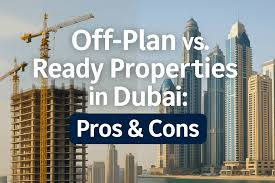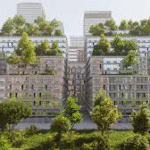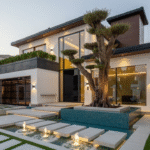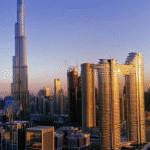Now Reading: Is Off-Plan Property Still Worth It in Dubai? Pros and Cons for 2025
-
01
Is Off-Plan Property Still Worth It in Dubai? Pros and Cons for 2025
Is Off-Plan Property Still Worth It in Dubai? Pros and Cons for 2025

Table of Contents
Investing in Off-Plan Property in Dubai remains a cornerstone of the emirate’s booming real estate market, with off-plan sales accounting for over 60% of transactions in 2024, valued at AED 761 billion across 226,000 deals. As 2025 unfolds, foreign and local investors are drawn to off-plan properties for their high ROI potential and flexible payment plans, but risks like oversupply and developer delays require careful consideration. This article dives into three key pros and three cons of investing in Off-Plan Property in Dubai in 2025, offering actionable insights and tax considerations to help you decide if this strategy aligns with your investment goals.
Pro 1: High Capital Appreciation Potential
Why It Matters: Off-plan properties in Dubai offer significant capital gains, with prices often rising 10-15% from launch to completion. In 2024, areas like Dubai Hills Estate and Tilal Al Ghaf saw off-plan values increase by 12% within 18 months. With 2025 forecasting 5-8% market-wide price growth, early investors can lock in lower prices before completion drives up demand.
Example: A AED 1.5 million off-plan apartment in Emaar’s Vida Residences could appreciate to AED 1.8 million by handover in 2027, yielding a AED 300,000 gain if sold.
Tax Insight: No capital gains tax applies in the UAE, so investors keep the full profit. U.S. investors, however, must report gains to the IRS, potentially using the Foreign Tax Credit.
Investor Tip: Target projects by reputable developers like Emaar or DAMAC in high-demand areas like Dubai Marina or JVC for maximum appreciation. Check offerings at .
Pro 2: Flexible Payment Plans

Why It Matters: Off-plan properties come with developer-backed payment plans, typically requiring 10-20% upfront and the rest spread over 2-5 years, often post-handover. In 2025, plans like 60/40 (60% during construction, 40% after completion) make investment accessible without heavy upfront capital.
Example: For a AED 2 million villa in DAMAC Lagoons, you might pay AED 200,000 initially and AED 50,000 quarterly until handover, easing cash flow compared to ready properties.
Tax Insight: No taxes apply to payments, but Dubai’s 4% transfer fee is due upon registration. Some developers waive this for early buyers, saving AED 80,000 on a AED 2 million property.
Investor Tip: Negotiate post-handover plans to defer payments until rental income kicks in, and verify escrow accounts with the Dubai Land Department (DLD) for security.
Pro 3: High Rental Yields and Customization

Why It Matters: Off-plan properties deliver 6-9% rental yields in 2025, outpacing global hubs like London (2.4%). Areas like JVC offer 8% ROI for apartments, while short-term rentals in Palm Jumeirah hit 9%. Investors can often customize finishes, enhancing appeal to tenants or buyers.
Example: A AED 1 million off-plan apartment in Aljada, Sharjah, could generate AED 80,000 annually at 8% ROI, with custom flooring options attracting premium tenants.
Tax Insight: Rental income is tax-free in the UAE, but short-term rentals may incur a tourism dirham fee (AED 7-20 per night) in Dubai, collected by investors. Home-country taxes apply for foreigners (e.g., U.S. Form 1040 reporting).
Investor Tip: Choose properties in tourism-driven areas for short-term rentals or family-friendly zones like Dubai South for long-term leases. Use platforms like Smarthost for rental management.
Con 1: Risk of Developer Delays
Why It Matters: Delays in project completion, common in off-plan developments, can disrupt ROI timelines and rental income plans. In 2024, 10-15% of Dubai projects faced delays of 6-12 months due to supply chain issues or labor shortages. While reputable developers like Emaar are reliable, smaller firms may struggle.
Example: A 2025 handover for a AED 1.5 million apartment delayed to 2026 could postpone AED 120,000 in rental income, impacting cash flow.
Tax Insight: Delays don’t incur taxes, but lost rental income may affect home-country tax planning for foreigners reporting projected earnings.
Investor Tip: Select projects by top-tier developers with strong track records. Review DLD escrow compliance to ensure funds are protected.
Con 2: Oversupply and Price Correction Risk
Why It Matters: Dubai’s 2025 market faces a 16% annual supply increase, with 120,000 new units expected, outpacing 5% population growth. This could lead to a 15% price correction in mid-market areas like JVC or Dubai South, reducing off-plan appreciation gains. Luxury areas like Palm Jumeirah are less affected.
Example: A AED 1 million off-plan apartment in JVC might see its value drop to AED 850,000 if oversupply hits, delaying profitable resale.
Tax Insight: No taxes apply to price drops, but reduced gains impact home-country capital gains reporting for foreigners.
Investor Tip: Diversify into emerging hotspots like Aljada (Sharjah) or Mina Al Arab (Ras Al Khaimah) with lower supply risks. Monitor trends via Property Finder.
Con 3: Higher Initial Costs and Uncertainty
Why It Matters: Off-plan investments require upfront payments (10-20%) without immediate rental income, tying up capital. Market uncertainties, like global economic shifts or oil prices below $65 per barrel, could affect demand upon completion. Service charges for new properties (AED 10-20 per square foot) also add to costs.
Example: A AED 2 million villa in Tilal Al Ghaf might require AED 400,000 upfront, with AED 15,000 annual service charges post-handover, straining budgets if delays occur.
Tax Insight: Service charges and upfront payments aren’t tax-deductible in the UAE. Foreign investors should budget for Dubai’s 4% transfer fee (AED 80,000 for a AED 2 million property).
Investor Tip: Opt for post-handover payment plans to reduce upfront costs and consult a financial advisor to assess market risks.
Is Off-Plan Property in Dubai Worth It in 2025?
Off-Plan Property in Dubai remains a compelling investment in 2025, offering 10-15% capital appreciation, 6-9% rental yields, and flexible payment plans in a tax-free environment. However, risks like delays, oversupply, and upfront costs demand caution. For example, a U.S. investor buying a AED 1.5 million off-plan apartment in Dubai Hills Estate could earn AED 120,000 annually (8% ROI) tax-free in the UAE but must report it to the IRS. The Golden Visa (AED 2 million investment for a 10-year residency) adds long-term appeal.
Looking Ahead to 2025
As of June 2025, Dubai’s off-plan market thrives, with Q1 2025 sales up 24% year-over-year, per DLD data. However, a projected 15% price correction in mid-market areas and global risks like oil price volatility require strategic planning. By focusing on reputable developers, high-demand zones, and diversified markets, investors can mitigate risks and capitalize on Dubai’s growth.
Conclusion
Investing in Off-Plan Property in Dubai in 2025 offers high rewards but isn’t without challenges. The pros—capital appreciation, flexible payments, and strong rental yields—make it attractive, especially in a tax-free market. Yet, delays, oversupply, and upfront costs require careful navigation. By choosing trusted developers, targeting high-ROI areas like JVC or Tilal Al Ghaf, and consulting RERA-licensed agents and tax advisors, you can maximize your returns. Weigh these six pros and cons to decide if off-plan investment aligns with your 2025 goals in Dubai’s vibrant real estate landscape. watch more
read more: How to Invest in UAE Real Estate as a Foreigner in 2025






















